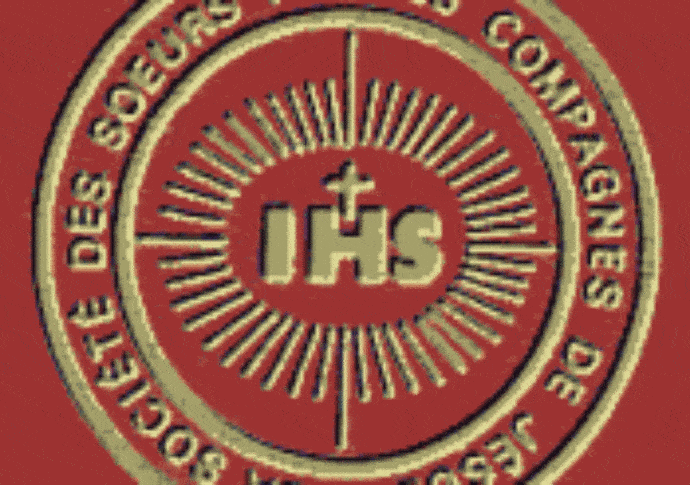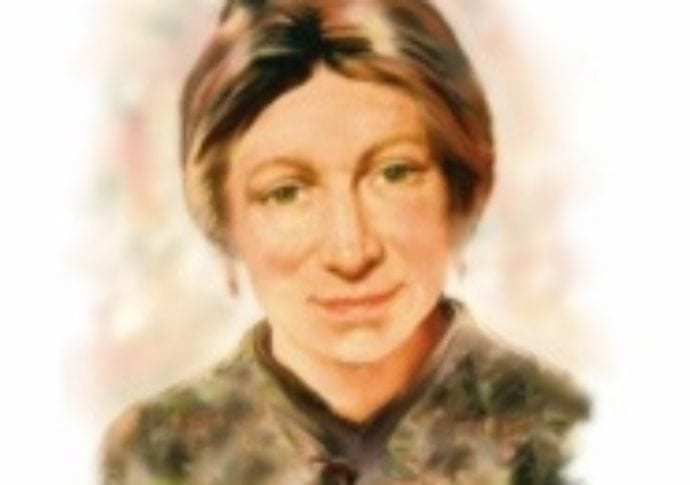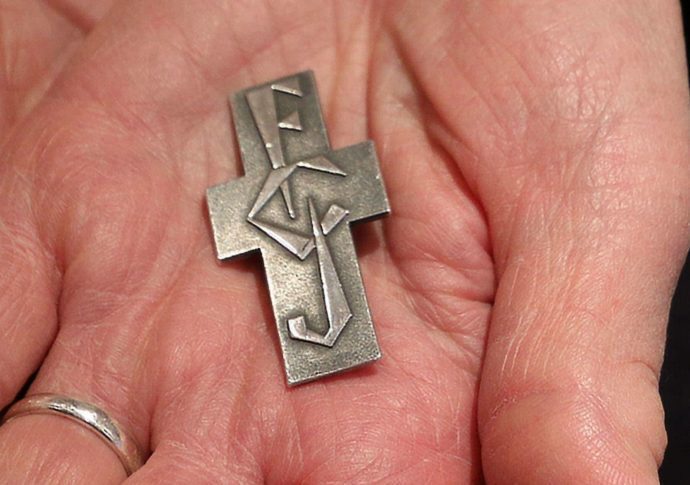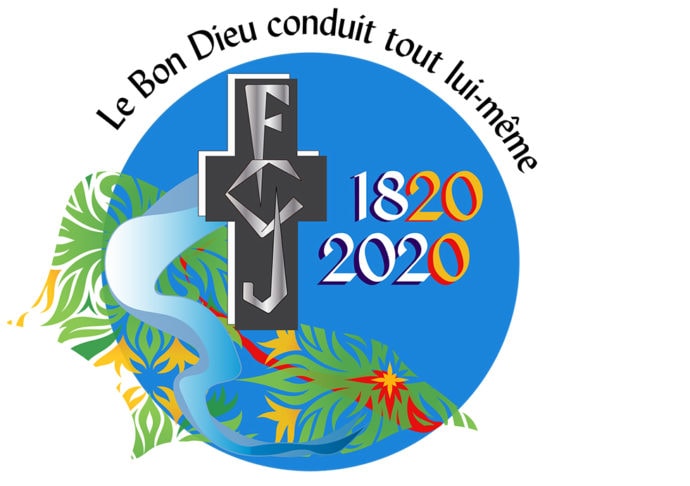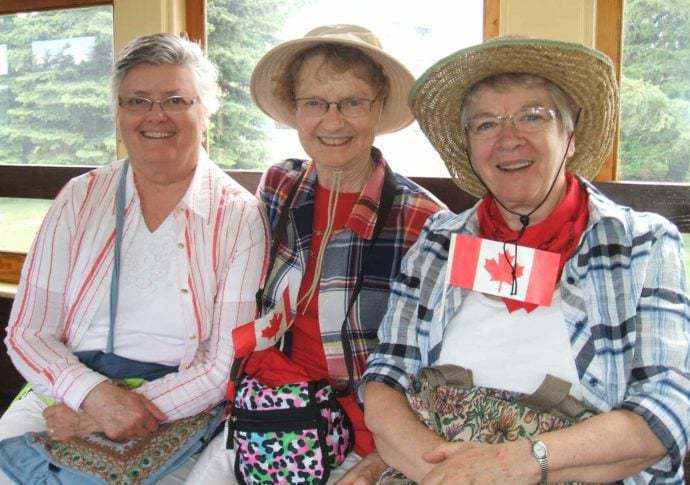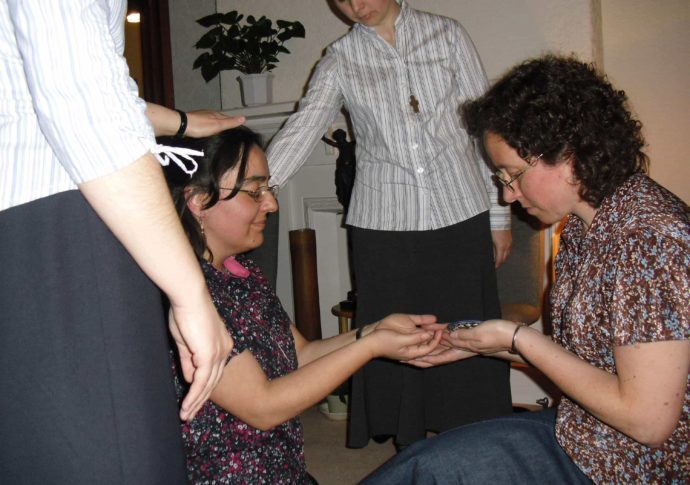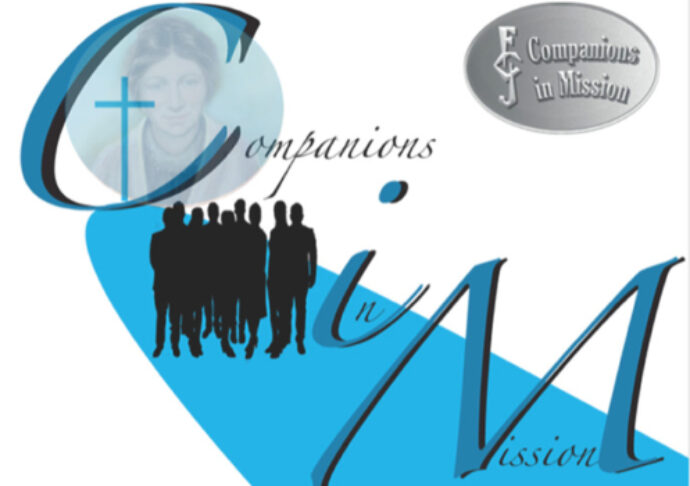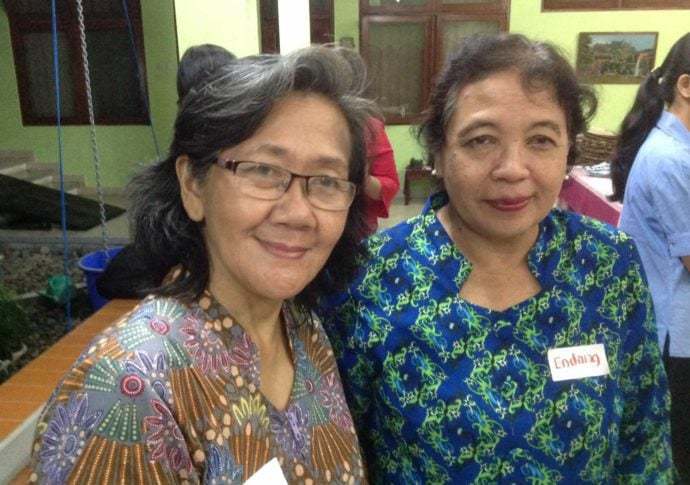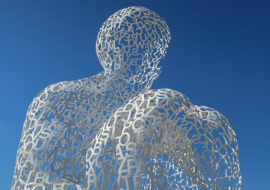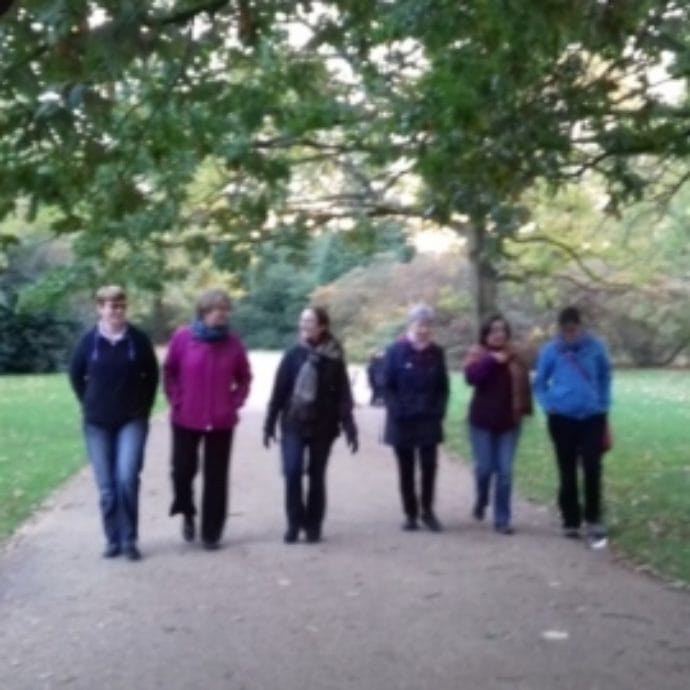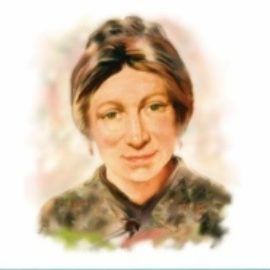Sr Teresa White, fcJ celebrates manifestations of the Holy Trinity in this piece, first appeared in Church Times
The following true story[1] is related by a member of the Little Sisters Disciples of the Lamb, a religious congregation founded in France in 1985. Many of these Sisters suffer from Downs Syndrome, and it is their practice to ‘beg’ for alms. They live in great simplicity, relying for their needs on what Providence offers them through the generosity of benefactors.
The Fourth Place
Begging for our ‘daily bread’, we stop at an apartment block, and randomly press the entrycom button. Someone picks up the phone, and we say: “We are three Sisters, could you provide us with something to eat for lunch?” A few moments of silence – we anticipate a refusal – then a brusque voice says: “Come on up! I’m on the fourth floor.” The door opens, and a man invites us in. We sit on the sofa, and he hands us three hot plates: “I live alone,” he says, “but I love cooking, and today, providentially, I have cooked for four!” Then he sits down opposite us. An agnostic, he tells us that six months earlier he had decided to stop working because he wanted to search for the true meaning of life.
How did we get round to talking about the Trinity? Who knows? Anyway, there we were, doing just that: trying to describe the icon of the Trinity that had been ‘written’ by Andreï Rublev in the 15th century, and telling our host how this Russian monk had bequeathed to humanity a work of art in which the light of God’s world rises over a land of blood and tears, like the victory of mercy over evil.
The man listens, then gestures towards us: “You too are three…” We smile. One of us adds: “There are not only three persons on this icon, there is a fourth place, empty, opposite them – they are waiting for the guest…” The man glances at the low table between himself and the three of us. Then, once again, he looks at us, and in a quiet voice, brings our conversation to a close: “So we are the picture …”
As they talked with their host about Rublev’s famous icon, the three Sisters knew that God had touched their hearts. And the unknown, unnamed man who had offered them hospitality seemed to realise that he had ‘entertained angels unawares’ (Hebrews 13: 2). All four sensed that they had experienced a moment of transcendence. This is a perfect example of how a work of art can carry us into the domain of the holy – that ‘place’ which is beyond the world we know, beyond time. That is precisely the purpose of an icon: it ‘enables us to see the world in the mirror of the holy’ (A. J. Heschel). And in the mirror, we catch reflections of glory…
The subject of that lunchtime conversation was not a simply a painting, it was a poem, a soul poem, ‘written’ in Russia during the Tartar invasions, a time of unprecedented barbarity and bitter infighting. Living as he did in the midst of all this conflict, Rublev opens a window that reveals something of the mystery of God’s presence in our world. He shows us a God of receptivity and tenderness. Indeed, to contemplate this icon is to be carried into ‘the silence of eternity, interpreted by love’ (J. G. Whittier).
The three ‘angels’ are God’s messengers – their wings signify their heavenly provenance. They symbolise the three divine persons, the Holy Trinity – hence this beautiful painting is usually referred to as the Trinity Icon. However, inspired as it was by the Genesis narrative of the three strangers who visit Abraham at the Oak of Mamre, it has an alternative title: ‘The Hospitality of Abraham’. This too is an apposite title, recalling Abraham’s response to the three men who approach his tent: he ‘knows at once, from deep within, that it is “the Lord” who wishes to be his guest’[2]. He runs to greet these strangers and begs them to stay. Happy when they agree to do this, he offers them generous refreshment. While they are eating, he stands near them under a tree, and silently looks at them. This is a theophany. It wordlessly but eloquently proclaims the message: ‘The kingdom of God is among you.’
Some would hold that a theophany (the word means ‘revelation of God’s nearness’) is a surprisingly common human experience: in a moment of stillness, God suddenly ‘appears’ in our lives, touches us deeply through something we see or hear, something we are thinking about, reading about, talking about. Is that what happened in that Paris apartment? Did the Sisters and their host truly encounter God in that place of loving kindness? ‘Ubi caritas et amor, Deus ibi est.’
Whatever title we give it, the Trinity Icon offers a vision of loving communion with God, a timeless image of the companionship enjoyed by those who eat and drink together in God’s presence. It communicates a gentle invitation to be ‘at home’ with God, to take the ‘fourth place’ at God’s table, to share the intimacy of a meal together. We are all called to participate in the mystery of God’s love, so we are all included in the picture. This is the sacred banquet of the Eucharist ‘in which the mind is filled with grace, and the pledge of future glory is given to us.’
[1] Freely translated from the ‘Retraite de carême sur internet avec les Dominicains’, 23 March 2023
[2] J. Ratzinger, ‘Jesus of Nazareth’, vol. 2, p. 267



